LEARNING TASK 2 : Describe fall protection systems
Fall protection equipment
A worker’s personal fall protection system will have different equipment depending on whether it is a fall arrest or fall restraint system. It will include:
- a safety belt or full body harness
- a lanyard, lifeline, and any other connecting equipment that is used to secure the worker to an individual point of anchorage or to a horizontal lifeline system
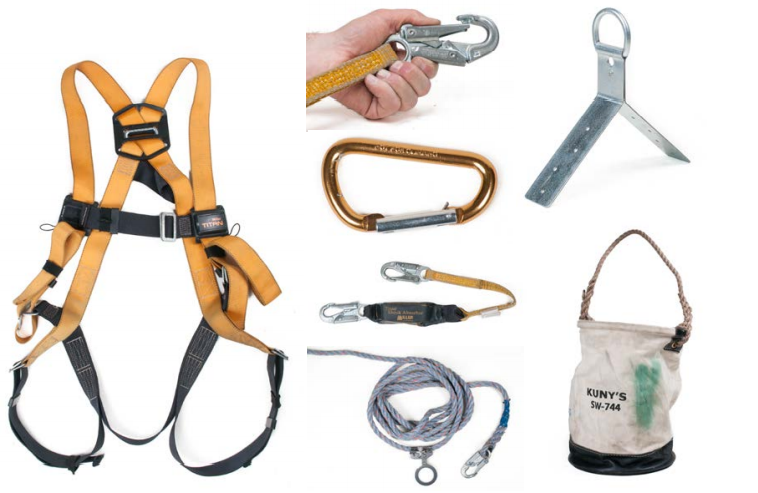
Harness and belts
When using personal fall protection equipment, wear a full body harness if you are at risk of falling. A full body harness consists of straps passed over the shoulders, across the chest, and around the legs. It also has a D-Ring or support point at the rear between the shoulder blades.
In a fall, a full body harness will protect you more than a safety belt because the harness distributes the force of impact over a greater area of your body. A belt should be used only as a part of a fall restraint system. It is important to adjust the harness to fit your body. A poorly fitting harness is uncomfortable and may not protect you.
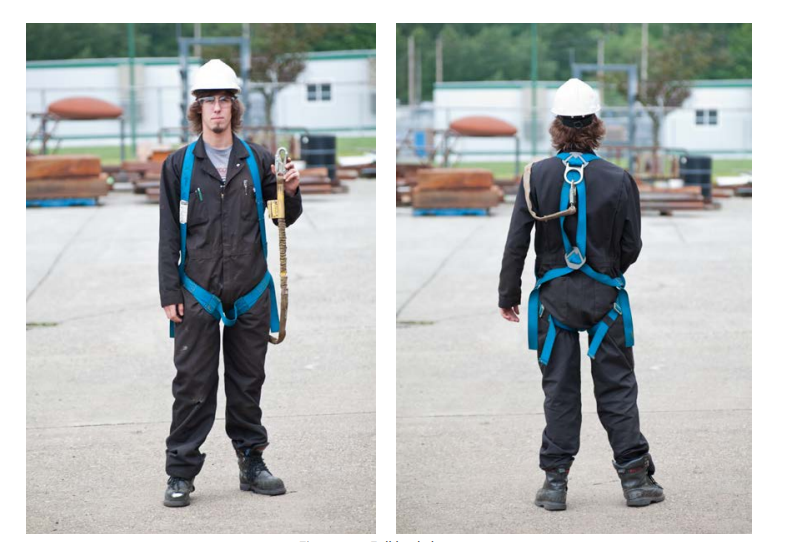
Connecting equipment
There are various types of equipment that can be used to connect the harness to the anchor point.
Lanyard
A lanyard is a flexible line of webbing, or a synthetic or wire rope, used to secure a safety belt or full body harness to a lifeline or anchor.

Deceleration device or shock absorber
A common method of reducing the impact strain on the body and the anchorage system is to use a deceleration device. These devices are designed to slowly allow a release of energy and absorb the initial shock. The device may be a spring or tear webbing design. It is important to know that this shock absorber may increase the length of the lanyard during a fall by as much as 1.2 m (4 ft.), which must be allowed for in the design of your personal fall protection system.
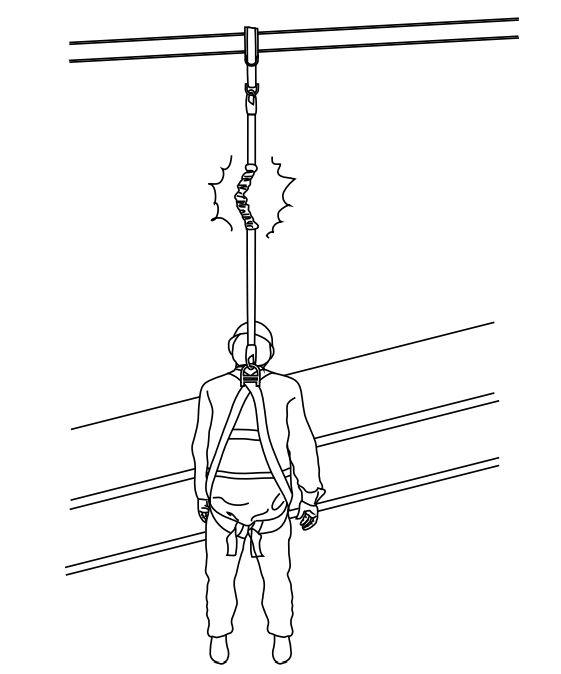
Lifeline
Lifelines are used to extend the connection of a lanyard to an anchor point. They can be vertical, horizontal, or retractable. A retractable lifeline works like a seat belt in a car. The line is under constant tension, and the moment you fall the lifeline locks.
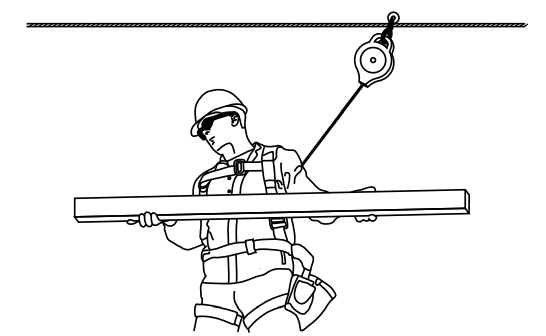
Rope grab
A rope grab is used to connect the lanyard to a vertical lifeline. The rope grab travels along the lifeline with you and will lock onto it if you fall.
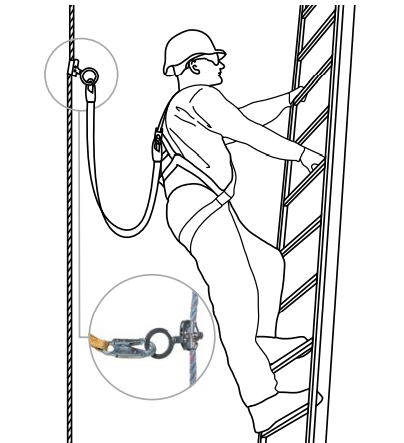
Snap hook or carabiner
Snap hooks are used to connect lanyards to rope grabs, harnesses, and horizontal lifelines. Snap hooks must be self-locking so that the hook can’t be open unless you depress a separate locking mechanism before opening the keeper.

A carabiner is an oblong-shaped connecting device also used to attach different components of a personal fall protection system. A carabiner should have gates that are both self-closing and self-locking with a breaking strength of at least 22 kN (5000 lb.). It should also have the manufacturer’s identity and load capacity clearly marked on it.
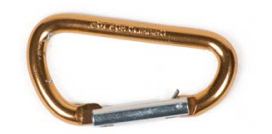
Inspection, storage, and maintenance
To maintain service life and performance, all fall protection equipment should be inspected frequently. Damage can include burns, hardening due to chemical contact, and excessive wear. The fall protection equipment must be inspected by a qualified person and replaced or recertified if any damage is found. Always store fall protection equipment in a dry location away from any substances that could cause deterioration.

